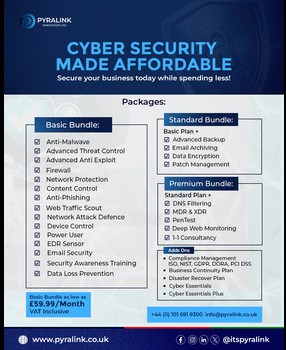Cyber Threats to Charities: How to Stay Protected
Charities and not-for-profit organizations play a crucial role in society, but their noble missions don’t shield them from cybercriminals. In fact, they are prime targets. Attacks on them are becoming more severe and persistent.
The Growing Cyber Threat to Charities
Phishing is the number one threat, followed by impersonation scams and then malware or other viruses. Cybercriminals see charities as easy prey due to their vast data stores—financial information, donor records, and sensitive communications—while many lack the budget to invest in robust cyber defenses.
Moreover, charities often rely on part-time employees and volunteers, many of whom use personal devices for charity work. These devices may not be updated or secured, increasing the risk of cyber threats. A single attack can have devastating consequences, from financial loss to reputational damage, leading to a decline in donor trust and support.
The Role of AI in Cyber Attacks
Experts warn that cyber threats are likely to escalate in the coming years, driven by rapid advancements in artificial intelligence (AI). AI-powered phishing scams are becoming more sophisticated, making fake emails and fraudulent communications nearly indistinguishable from legitimate ones. This means charities must be more vigilant than ever.
How Charities Can Stay Safe
The good news? Cyber security doesn’t have to be expensive or complicated. By adopting essential security measures, charities can significantly reduce their risk of falling victim to an attack. Here are the top steps to take:
1. Enforce Strong Password Policies
Ensure employees and volunteers use secure passwords and never share them. The National Cyber Security Centre (NCSC) recommends using three random words to create a unique and strong password or a password manager to create and save passwords.
2. Restrict Admin Rights
Limit access to critical accounts based on necessity. Regularly review who has access and immediately revoke permissions when someone leaves the organization or the job role changes.
3. Implement Regular Cloud Backups
Back up all essential data—donor information, financial records, marketing materials, and operational data—to the cloud. Ensure backups are automated and regularly tested.
4. Train Staff on Phishing and Cyber Awareness
Phishing scams are getting harder to spot. Provide ongoing training so staff and volunteers can recognize suspicious emails and messages. Have a clear process in place for reporting and handling phishing attempts.
5. Secure Your Supply Chain
Cyber attacks often start with third-party suppliers finding the weakest link. Ensure your vendors and partners follow strict cyber security protocols to prevent potential breaches from affecting your charity.
6. Keep All Software and Devices Updated
Unpatched software is a hacker’s dream. Regularly update operating systems, antivirus software, and applications across all devices, including computers, tablets, and mobile phones.
7. Establish a ‘Bring Your Own Device’ (BYOD) Policy
If volunteers use personal devices for charity work, implement a clear BYOD policy that includes cyber security guidelines. Update this policy annually to address new threats.
Pyralink is ready to offer the needed cyber security guidance to your charity or non-profit organization. Contact Us today for affordable training tailored for employees and volunteers. Protecting your charity starts with taking action now.

